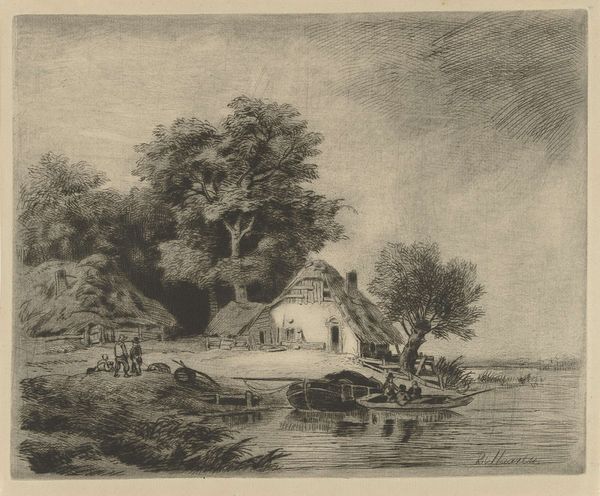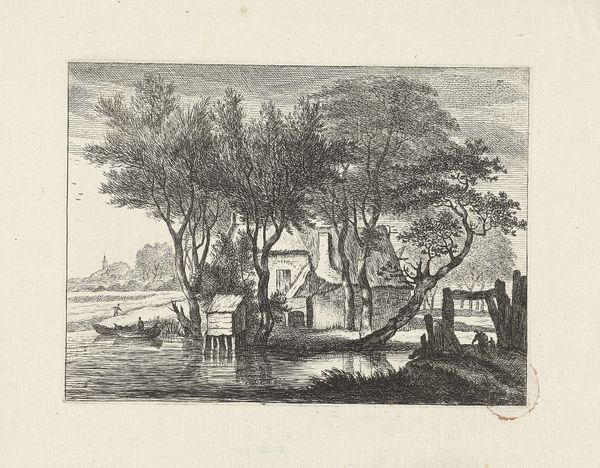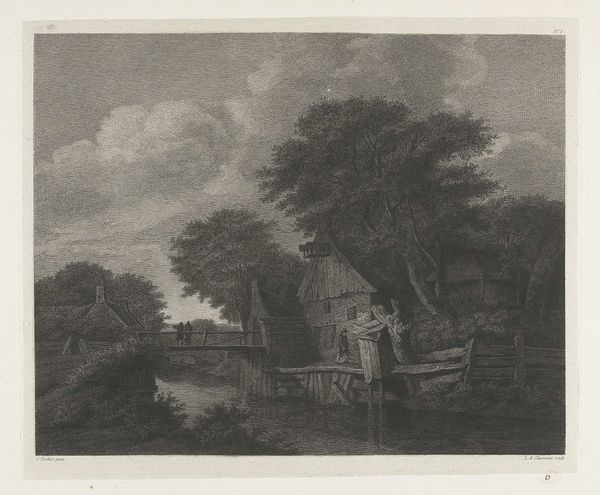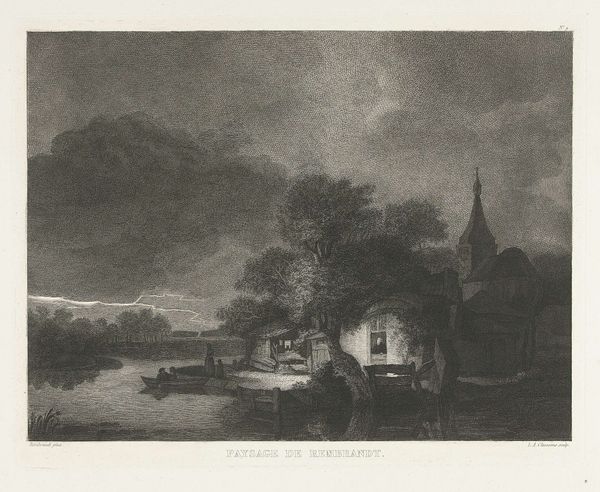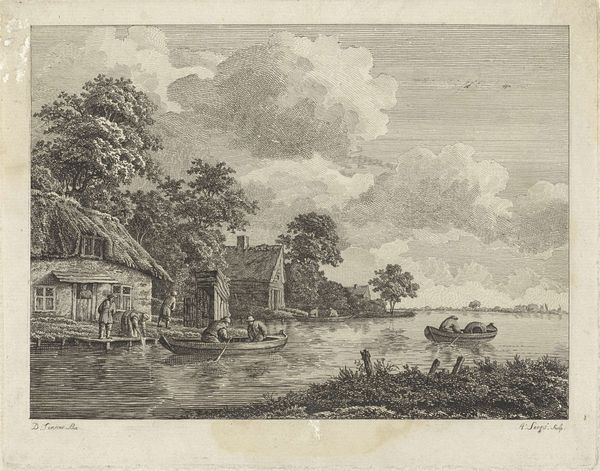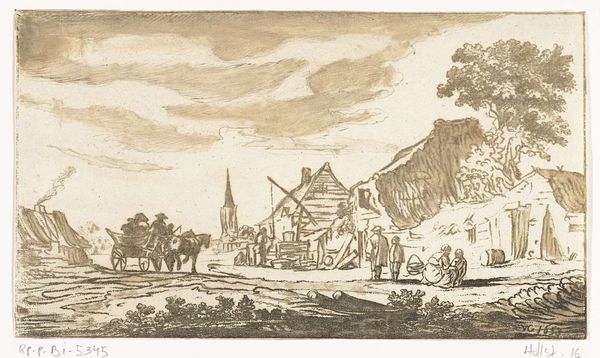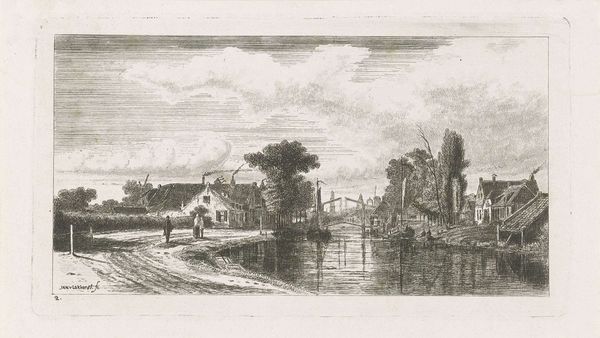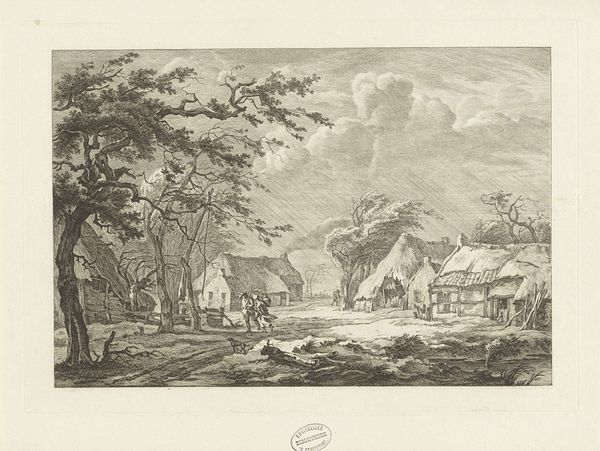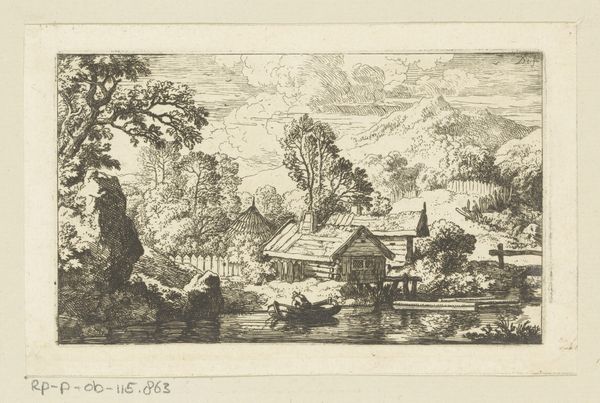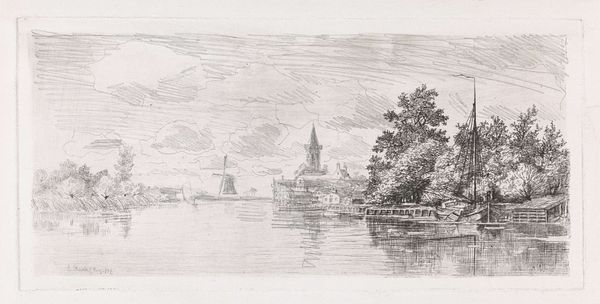
drawing, print, etching
#
drawing
# print
#
etching
#
pencil sketch
#
landscape
#
pencil drawing
#
romanticism
Dimensions: height 248 mm, width 313 mm
Copyright: Rijks Museum: Open Domain
Lambertus Antonius Claessens created this landscape with stormy skies using etching, a printmaking technique, in the late 18th or early 19th century. The process begins with a metal plate, coated with a waxy ground. The artist then draws through this ground with a sharp needle, exposing the metal. Immersing the plate in acid creates incised lines where the metal was bare. The depth of these lines determines how much ink they hold, and thus the darkness of the printed line. Look closely, and you’ll notice how Claessens skillfully varies the density and direction of his lines. He evokes the textures of the stormy sky, placid water, and foliage with a limited tonal range. Unlike painting, etching allows for the reproduction of images, democratizing art by making it more accessible. Consider the labor involved: from the preparation of the plate to the final printing, each stage demands precision. By focusing on the materials and processes involved, we see how etching mediates between the artist's vision, skilled handwork, and the wider world of production and consumption.
Comments
No comments
Be the first to comment and join the conversation on the ultimate creative platform.
